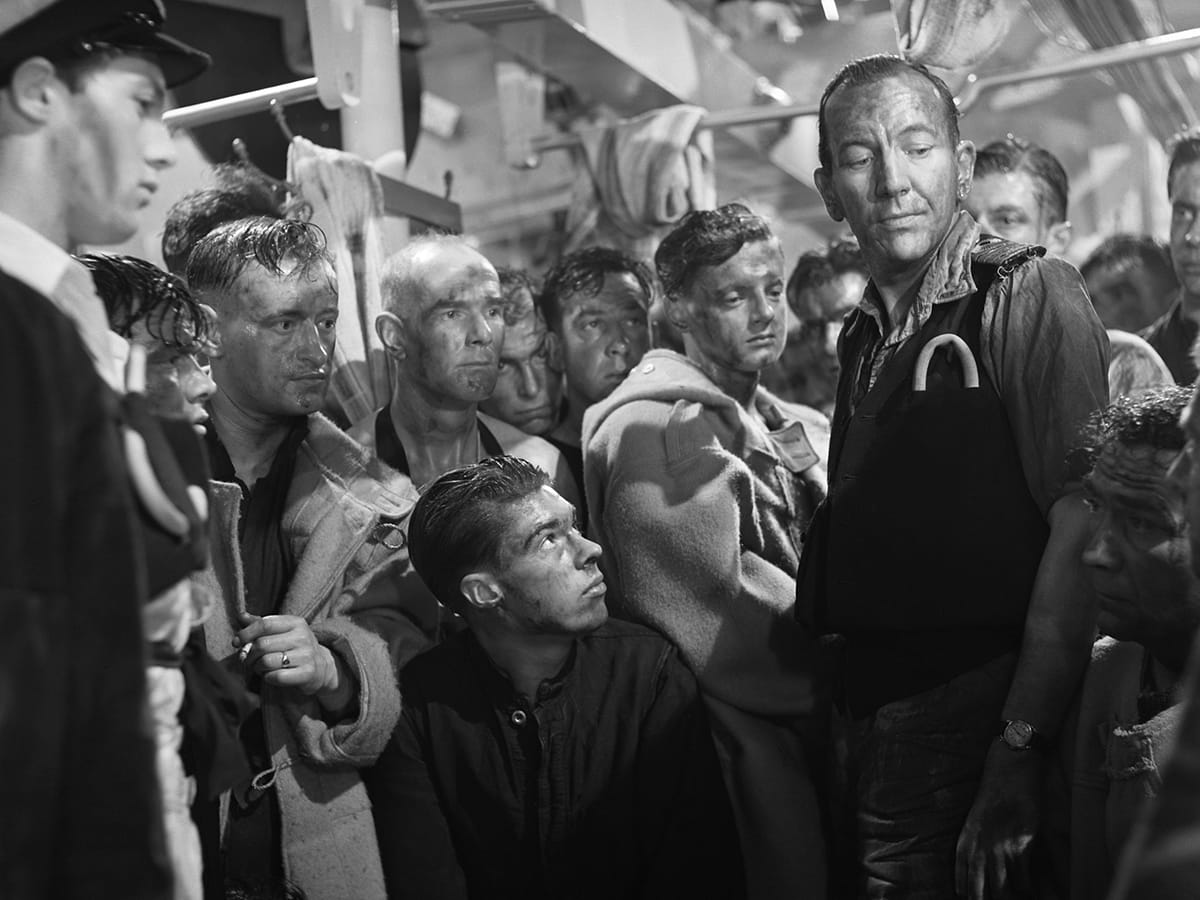In Which We Serve

In Which We Serve began one of the greatest director/author collaborations in cinema, that of filmmaker David Lean (1908-1991) and theatrical legend Noel Coward (1899-1973). Ironically at first, neither Coward’s work on the film, nor his collaboration with David Lean were a comfortable fit. Coward was the most renowned playwright/actor/stage director of his generation, but hadn’t a clue as to how to shoot a movie. And David Lean, already the greatest film editor in England, had long been prepared to direct his first film, but wouldn’t accept anything less than full credit for his work (as he had previously been denied on Major Barbara). Coward initially sought out Lean’s services as an editor and assistant; he was so impressed with Lean’s work that he agreed to share directing credit.
In Which We Serve remains, some fifty-three years later, a magnificently effective action film as well as a very moving drama. This is due entirely to the combined skills of Coward and Lean, and a cast that included a generation of future stars of stage and screen. A large part of Coward’s genius as a writer was his ability to give the various members of England’s social classes convincing voice. Nowhere is this facility more evident than in In Which We Serve. The depiction of Captain Kinross (played with great warmth by Coward) and his upper-class family crossed barriers to elicit sympathy from theater audiences in working-class neighborhoods of England. Similarly, Chief Petty Officer Walter Hardy (played by Bernard Miles, later Lord Miles, in a performance that should have merited Oscar consideration), gives a rare cinematic potrait of a member of that oft-overlooked part of English society, the educated middle class. And perhaps best of all is Shorty Blake (John Mills), an honest, soft-spoken, sometimes cynical working-class hero. And the actresses perfectly complement their male counterparts: Celia Johnson as Alix Kinross, the dignified, loving wife of the captain; Joyce Carey as Kath Hardy, tending her husband’s garden in his absence; and Kay Walsh as Freda, whose marriage to Shorty and birth to their child (played by John Mills’ infant daughter Juliet) during the blitz provides one of the film’s key dramatic plot lines, one that runs parallel with the story of her husband’s ship.
The film’s accuracy in its depiction of men and ships resulted from the contribution of Admiral of the Fleet Lord Louis Mountbatten (1900-1979). Mountbatten’s exploits, as Captain of the destroyer H.M.S. Kelly—sunk off Crete on May 23, 1941, as part of a suicidal effort by the Royal Navy to oppose the German landings—formed the basis for its plot.
The idea for the movie grew out of a night in July of the same year, when Mountbatten and his wife Edwina accompanied Coward to the cinema. The Admiral related the story of the Kelly; and Coward broached the idea of a film recounting the exploits of the destroyer and her crew. Mountbatten received it enthusiastically, and secured the support of the government authorities (who were aghast, at first, over the notion of making a movie about a naval disaster), providing key assistance on many aspects of the production. When Mountbatten found that Coward’s extras did not look like navy men, he supplied the real article, recruiting 200 patients from a nearby naval hospital. And the addresses of Coward’s Captain Kinross to the crew on the Torrin’s commissioning day, and to her survivors after their return to port, were taken word-for-word from Mountbatten’s actual addresses to the Kelly’s crew.
But it was David Lean who pulled all of these disparate elements together into a viable cinematic whole. His skills as an editor show in the clean, precise visual structure of each scene, and the delicately structured montage sequences. If few words are wasted in telling this “story of a ship,” even less footage is spent needlessly. The film’s cyclical structure, cutting between the reminiscences of various characters, makes In Which We Serve truly the “Citizen Kane” (which both Coward and Lean studied closely) of war movies, as well as the precursor to Lean’s even more celebrated drama Brief Encounter. And its eloquently expressed pathos and comedy give In Which We Serve clear title as successor to Coward’s most renowned stage works, Private Lives and Design For Living, although it would also prove Coward’s sole effort at directing for the screen. For in David Lean, he’d found the filmmaker whom he regarded as the ideal interpretter of his work.




